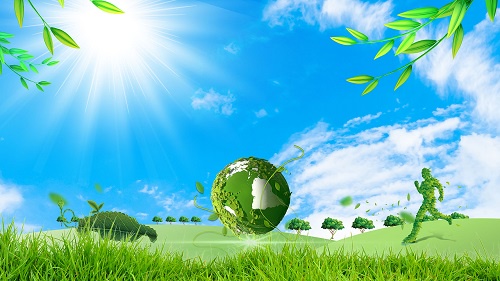Environmental monitoring is a crucial aspect of maintaining the balance and sustainability of our planet. It is a practice that involves the systematic collection of data, analysis, and interpretation to understand and preserve our environment. At the heart of environmental monitoring systems are specific tools known as 'environmental sensors,' which are responsible for detecting and measuring various environmental parameters. These sensors are integral components of any effective environmental monitoring system and have revolutionized the way we understand and protect our natural surroundings.
This comprehensive guide will provide an in-depth look at the various types of sensors used in environmental monitoring and how they contribute to the overall ecosystem's sustainability.
1. Air Quality Sensors
Air quality is a critical aspect of environmental monitoring. As such, air quality sensors are widely used in environmental monitoring systems. These types of sensors monitor the concentration of various airborne pollutants such as carbon dioxide, sulfur dioxide, nitrogen dioxide, and particulates. They are instrumental in identifying areas with poor air quality, thereby helping authorities take appropriate action to control air pollution.
2. Water Quality Sensors
Water quality sensors are essential tools for monitoring the health of our water bodies. They measure various parameters such as pH, temperature, dissolved oxygen, conductivity, and turbidity. These sensors are often used in environmental monitoring systems to detect pollution in rivers, lakes, oceans, and other water bodies, helping authorities implement proper water management practices.
3. Soil Moisture Sensors
Soil moisture sensors are significant in environmental monitoring, especially in agriculture and forestry. These sensors measure the water content in the soil, which is vital for plant growth and health. Accurate soil moisture measurements can lead to efficient water use, improved crop yields, and prevention of soil-related environmental issues like erosion.
4. Temperature Sensors
Temperature sensors play a crucial role in environmental monitoring by measuring the ambient temperature of the air, water, or soil. They are vital in monitoring and predicting weather patterns and climate change. These sensors can also be used to track the impacts of global warming and other climatic phenomena.
5. Noise Sensors
While not often thought of, noise pollution is a significant environmental concern. Noise sensors (or sound level meters) are used to monitor noise levels in urban and industrial areas. They help in creating noise maps and implementing regulations to control noise pollution, thereby preserving the tranquility of our environment.
6. Radiation Sensors
In an era where nuclear energy and radiation-related technologies are increasingly prevalent, radiation sensors have become an essential part of environmental monitoring. They detect and measure the levels of ionizing radiation in the environment, helping ensure that radiation levels remain within safe limits.
7. Gas Sensors
Gas sensors are widely used in environmental monitoring systems to detect the presence and concentration of various gases. These sensors can measure a wide range of gases, including methane, ozone, carbon monoxide, and more. They are particularly useful in the detection of greenhouse gases, contributing to efforts to combat climate change.
8. Light Sensors
Light sensors, also known as photodetectors or photosensors, measure light levels in the environment. They are used in environmental monitoring to track daylight patterns, monitor plant growth, and study wildlife behavior. They also help in managing light pollution in urban areas.
9. Humidity Sensors
Humidity sensors measure the amount of water vapor in the air, soil, or confined spaces. These sensors play an essential role in monitoring and predicting weather conditions and are used in various industries, including agriculture, forestry, and building management.
10. Pressure Sensors
Pressure sensors measure the pressure of gases or liquids in the environment. They are often used in environmental monitoring to study weather patterns, ocean currents, and the behavior of volcanoes.
What Sensors Are Used in Environmental Monitoring?

In case you have found a mistake in the text, please send a message to the author by selecting the mistake and pressing Ctrl-Enter.

No comments yet